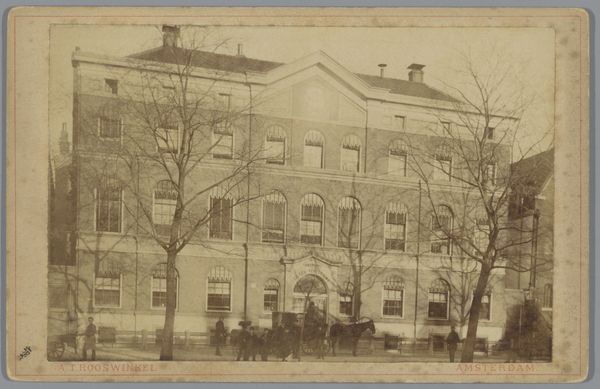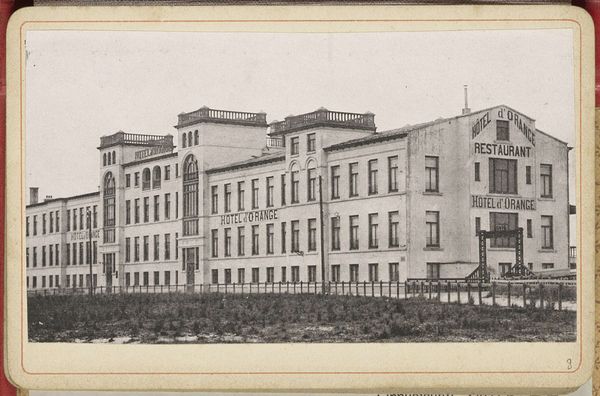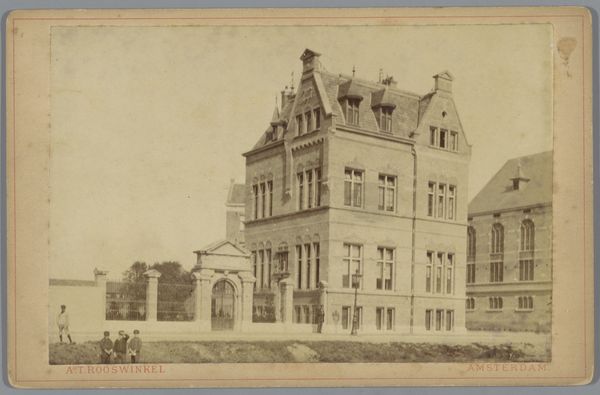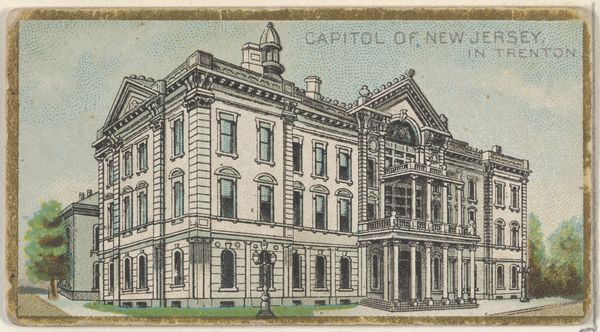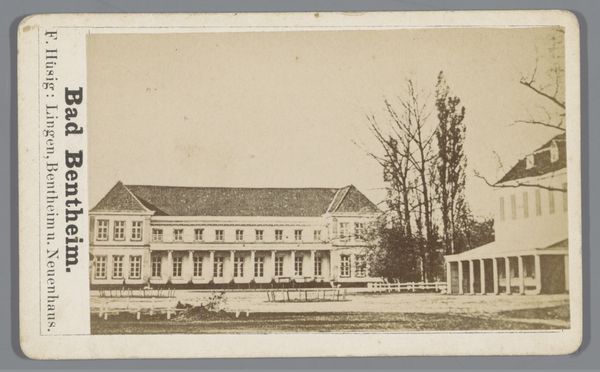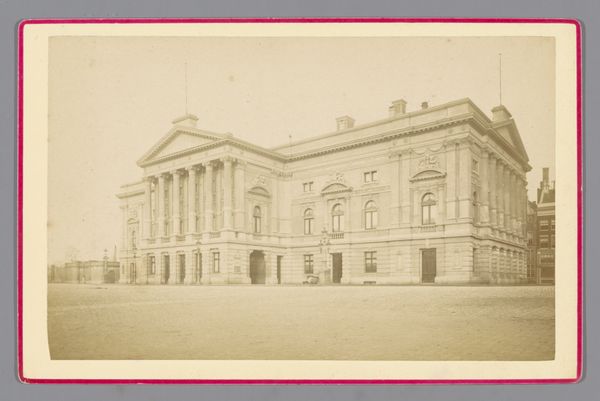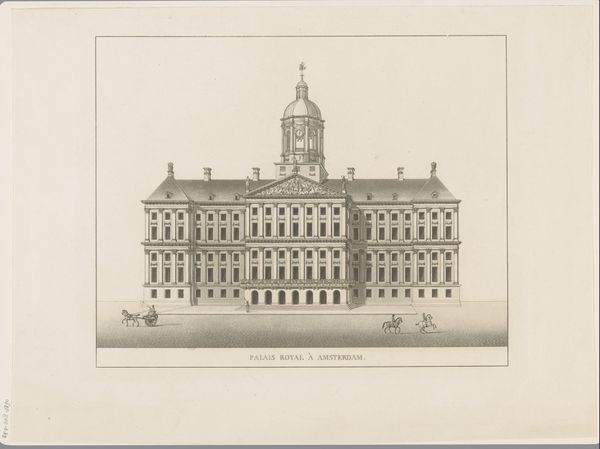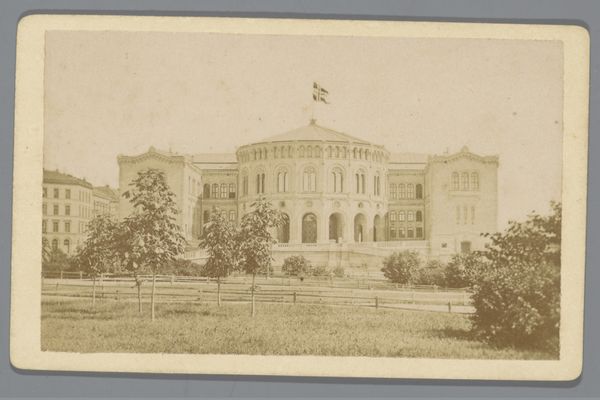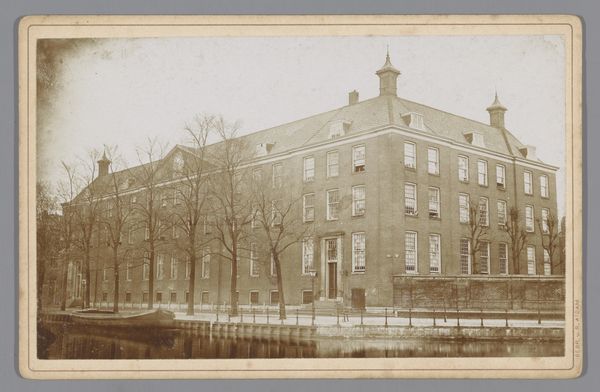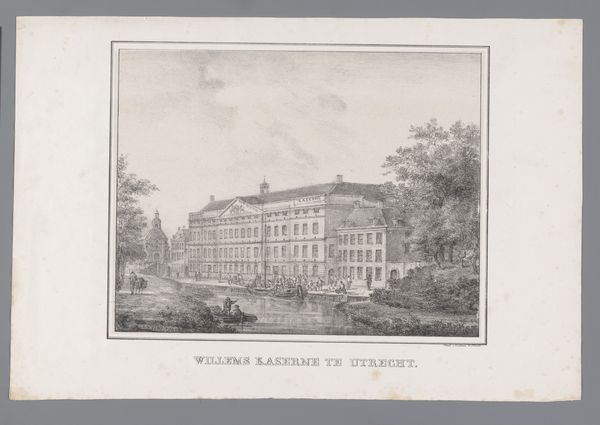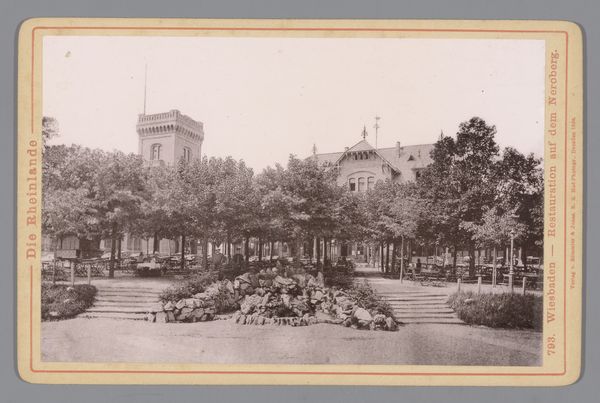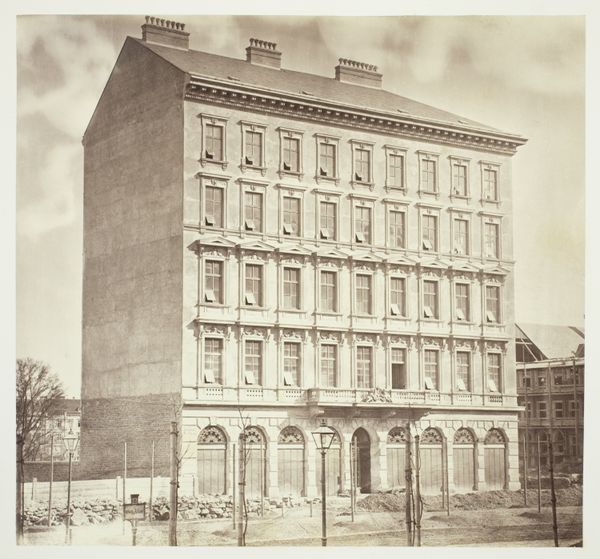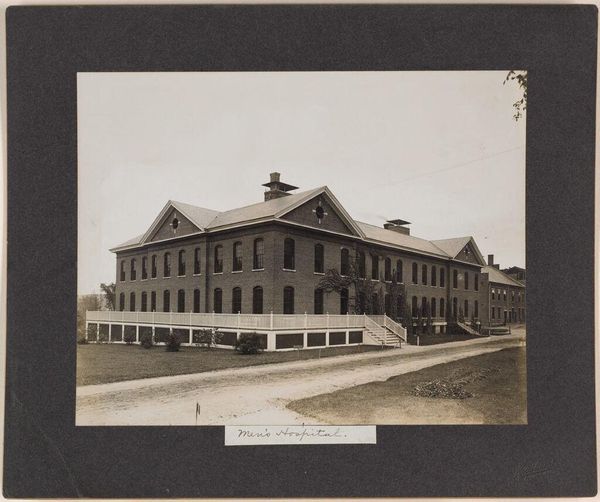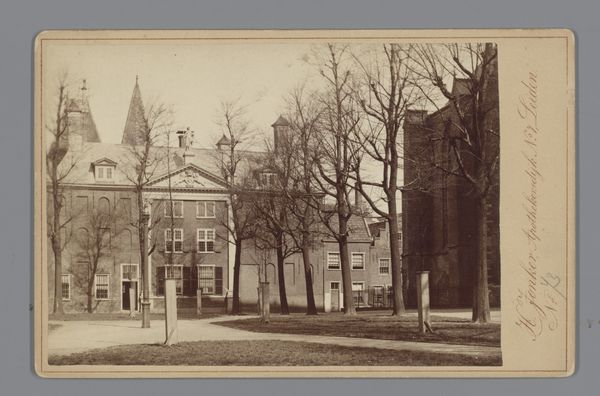
Agricultural Building in Washington, from the General Government and State Capitol Buildings series (N14) for Allen & Ginter Cigarettes Brands 1889
0:00
0:00
drawing, coloured-pencil, print
#
drawing
#
coloured-pencil
# print
#
gold leaf
#
landscape
#
coloured pencil
#
cityscape
#
academic-art
#
realism
#
building
Dimensions: Sheet: 1 1/2 x 2 3/4 in. (3.8 x 7 cm)
Copyright: Public Domain
Curator: This delightful image is entitled "Agricultural Building in Washington" from a series of trade cards produced by Allen & Ginter, around 1889. It's a colored pencil and print work, capturing the civic architecture of the time. Editor: Oh, what a stately presence! There’s a sort of calm, collected energy about this building. Almost…bureaucratic? It reminds me of a really well-organized garden shed. Curator: Garden shed writ large, perhaps! Allen & Ginter were keen on these promotional series, which presented idealized views of American progress and industry. The image was included in sets of cards given away with cigarette purchases. They used a type of collectible fever, using architecture and the celebration of modernity to market tobacco! Editor: That gilded frame! It elevates what could have been a mere advertisement. There is something so earnest about this; an uncomplicated love of red brick. You almost expect a puff of optimistic steam to emerge from one of those chimneys. Curator: You pick up on the optimism of the Gilded Age itself. These buildings represented institutions, a promise of growth and refinement. Think of what that says about art patronage at the time too, right? Mass marketing aligning itself with emblems of national pride. It blurs the line. Is this image promoting progress, or cigarettes? Editor: Maybe they saw no distinction. Smoke 'em if you got 'em...opportunities. I find it so quaint that cigarette companies once used art to entice. A different kind of marketing world compared to ours, right? Though it's got me thinking about propaganda—this almost qualifies, but it is just so innocent and straightforward! Curator: And crafted with so much care! Each detail rendered meticulously. Those awnings, for example. What narrative of everyday life might they evoke? It almost makes me think that the function of art has become commoditized, no longer really connected with public welfare. Editor: Exactly! To return to the building’s aura – there's an accessible quality to its grandeur. Not cold marble, but warm, familiar brick. Perhaps it served as a friendly beacon of agricultural know-how? That’s the mood it sets for me, anyway. Curator: It's an interesting artifact, this little card, layered with the ambitions and contradictions of its age. A reminder that art is never truly detached from the market forces that shape it. Editor: A bit like agriculture itself, really— dependent on soil, yes, but shaped by capital too. Food for thought – pun intended – alongside a visually delightful little building.
Comments
No comments
Be the first to comment and join the conversation on the ultimate creative platform.

